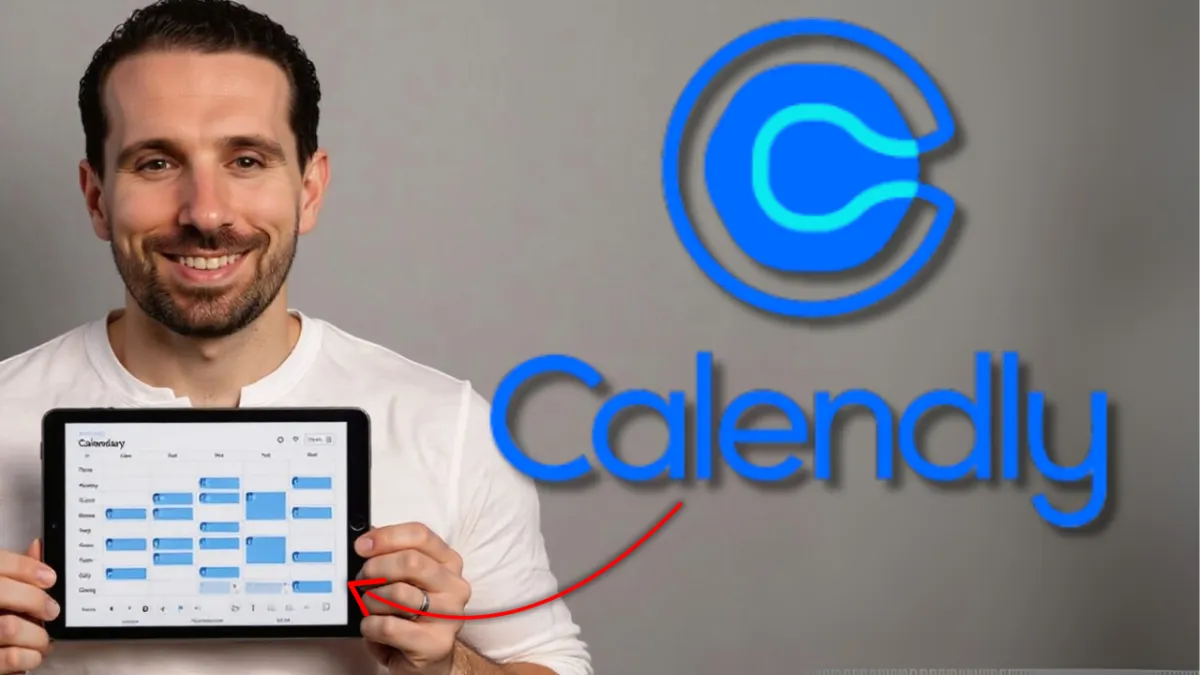Check out my YouTube channel for even more content HERE

How Should Mortgage Brokers Use Calendly to Take Control of Their Diary?
For many UK mortgage brokers, the diary is the silent saboteur of success.
Random bookings. Back-and-forth messaging. No-shows. Double-bookings. Zero prep time.
Sound familiar?
When you’re juggling client appointments, chasing documents, following up on protection, posting to socials, and trying to find time for lead generation — your diary can feel like a battlefield.
But it doesn’t have to be that way.
This is where Calendly becomes your secret weapon — not just a scheduling tool, but a client filter, a sales enhancer, and a key part of your mortgage business system.
This blog walks you through five strategic ways to use Calendly that I teach every day in my coaching programme — including the exact setup that has doubled show-up rates for some of the brokers I work with.
Why Should Mortgage Brokers Set Clear Booking Availability?
Let’s start with the biggest shift most brokers need to make:
Stop letting clients pick any time that suits them.
Open calendars create chaos. When clients can book into your diary at any hour of the day, you’re stuck in reactive mode — constantly shifting gears, never getting into a productive rhythm.
Instead, block out your availability in advance.
For example: Allow bookings between 10am–12pm, Monday to Thursday.
This structure:
Gives you control over your week
Protects deep work time (for case work, marketing, or downtime)
Helps you assess capacity as you scale
Reduces burnout
Setting boundaries also creates perceived value. Limited availability often increases demand.
This is about shifting from being available to everyone to being intentional with your time — so you can serve better and scale sustainably.
How Can Renaming Your Appointments Improve Lead Quality?
Here’s a common oversight: brokers sending out Calendly links that say “Mortgage Chat” or “Free Consultation.”
Sounds friendly, right?
But it’s vague. And vague language leads to vague expectations — which leads to wasted time.
Instead, use descriptive, positioning-based names.
Try something like: “Discovery Call – 15 minutes to see if we’re a good fit”
This does two powerful things:
Sets the tone – You're not giving free advice to anyone with a question. You're filtering for serious prospects.
Frames the call as mutual – It’s not just about them qualifying for a mortgage, it’s about whether you're a good match for each other.
The wording you choose on your booking link matters. It’s a micro-message that shapes the client’s mindset before you even meet.
Tip: Use the meeting description to reinforce this. Add what the call covers, how long it takes, and what happens next.
What Pre-Call Questions Should Mortgage Brokers Ask?
This is one of the most underused — and most powerful — features of Calendly.
You can add questions that clients must answer before they confirm their booking.
I call this the “Mini Fact Find” and it’s an essential part of Stage 3 (Pre-Qualification) in the Mortgage Business Mastery Method.
Ask 3–5 key questions such as:
What prompted you to book today?
Are you buying, remortgaging, or investing?
What’s your estimated deposit and income?
Have you had any issues with credit?
How did you hear about me?
Why this works:
You gain immediate context, so you’re not going in blind.
You can prepare documentation or direction in advance.
You filter out poor-quality or unsuitable leads.
You increase perceived authority — professionals ask questions first.
This also uses the Commitment & Consistency Principle — once someone takes the time to answer these questions, they’re more likely to show up and take the call seriously.
Make these questions required. If they’re not a fit, it’s okay to cancel or reschedule. You’re not a robot. You’re a professional with a process.
What Should Happen After a Client Books an Appointment?
This is where you build trust before the call begins.
Once someone books, redirect them to a prep page or welcome video. Think of it as onboarding — but simple.
Your goal: reduce anxiety, increase confidence, and boost show-up rates.
Options to include:
A short 60-second video from you introducing yourself
What to expect on the call
What to bring or prepare (e.g., income documents, ID)
Testimonials or case studies
A few FAQs to overcome objections in advance
Why this works:
Creates emotional safety — they know what’s coming.
Uses the Mere Exposure Effect — they feel more connected to you after seeing your face and hearing your voice.
Prepares them mentally, which means better engagement on the call.
One broker I work with went from 60% to 92% show-up rate just by adding a short video explaining what would happen on the call.
Should Mortgage Brokers Allow Same-Day Bookings?
In nearly every case: no.
Here’s why:
You don’t have time to prepare.
It disrupts your planned day.
You risk looking unprofessional if caught off-guard.
It adds unnecessary stress.
Calendly allows you to set a minimum notice period before someone can book — I recommend 12–24 hours.
That way, you can:
Review their intake answers
Gather relevant notes or documents
Start the day knowing exactly what’s ahead
The myth of "great customer service = always available" needs to go.
Great customer service = well-prepared, focused, and structured.
If someone genuinely needs to speak with you urgently, they’ll message you directly. And then you can choose to fit them in manually. But don’t let that be the default.
How Does Using Calendly Help You Sell More Without Working More?
When used right, Calendly does more than just book calls.
It becomes a sales system.
Let’s review what we’ve covered:
Availability limits = structure and clarity
Renamed calls = positioned authority
Pre-call questions = lead qualification
Prep pages = increased trust and readiness
No same-day calls = lower stress and higher quality conversations
These changes compound.
You stop wasting time on low-quality leads.
You show up prepared and confident.
You take control of your week.
And your conversion rate improves — without needing more leads.
This is how we scale smarter, not harder.
What Are the Most Common Mistakes Brokers Make With Their Calendars?
Let’s break these down quickly:
Letting clients book any time, any day
Using vague or generic language like “chat” or “intro call”
Not asking pre-qualifying questions
Sending people a calendar link with no context
Allowing same-day bookings (and regretting it)
If you’re doing any of these, don’t panic — they’re easy to fix.
And once you do, your diary goes from chaotic and reactive to intentional and effective.
What’s the Bigger Picture for Brokers Using Tools Like Calendly?
It’s not about the tool — it’s about how you use it.
Calendly, when used well, supports the structure of your sales system. It lets you:
Control your availability
Qualify prospects early
Position yourself with clarity
Build trust before the call
Focus on high-quality conversations
These small shifts stack up.
And when combined with a proper discovery and submission call framework, a clear protection sales process, and consistent brand content — this is how you go from “busy broker” to “scalable business.”
Final Thoughts: Should You Be Using Calendly as a Mortgage Broker?
Yes — but strategically.
Here’s your 5-step checklist:
Limit availability to 2–3 call blocks a day
Rename meetings clearly (e.g. Discovery Call – 15 mins)
Use 3–5 mandatory pre-call questions
Redirect to a prep page or video after booking
Block same-day bookings with a 12–24 hour notice rule
These aren’t just admin tips. These are scaling strategies.
Your calendar is not just where appointments happen — it’s where momentum is made.
What’s the Next Step?
If you're ready to structure your week, simplify your sales process, and attract better leads — then take the next step with my 30-day programme designed to help brokers like you get back in control.
Visit: www.ashborland.com/30day
It’s time to stop surviving your calendar — and start using it to grow your business.
